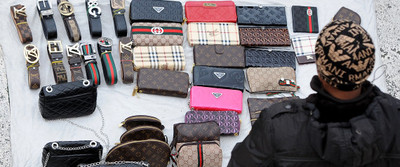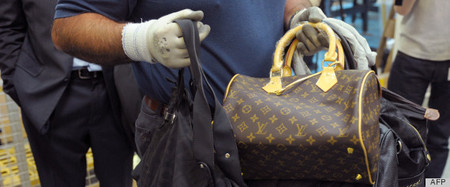Fake isn't chic and luxury can't be copied. Nevertheless, counterfeit handbags are sold everywhere, from street vendors, yard sales, and websites to suburban shopping malls and hospital gift shops.
Fashion is a $300 billion industry in the United States and counterfeit bags are the most widely infringed product despite the fact imitation clutches have no inherent value; they are cheaply made; and they do not serve as status symbols for so-called fashionistas who purchase them with complete disregard for the nefarious industry that produces such spurious objects.
The counterfeit luxury handbag business is a mammoth enterprise that is intimately connected to numerous illegal activities, including prostitution, child labor, drug trafficking, money laundering, and terrorism. Fashion is a good investment and form of social currency but counterfeiting has regrettably diluted luxury brands.
The Federal Bar Association held a pivotal and pioneering Fashion Law Conference on March 20, 2015 at the modern-looking United States Court of International Trade in Lower Manhattan. Eloquent legal professionals and industry representatives Olivera Medenica and Charlie Maddock discussed cutting-edge wearable technology and privacy concerns in part to underscore the fact that the time is ripe for lawyers to familiarize themselves with fashion law.
The term "fashion law" is seductive and spellbinding. Knowledge of a bevy of legal disciplines, including intellectual property law, environmental law, criminal law, commercial transactions, tax law, and counterfeiting strategies may be useful for the attorney looking to excel in this evolving and expanding field.
Trademark counterfeiting is a crime of the 21st century that costs legitimate businesses money and lost jobs. Remarkable things are worthy of remark, and trafficking counterfeit luxury goods undoubtedly weakens intellectual property rights and serves no viable function.
Raymond P. Dowd, who established and executed New York City's three-pronged approach to eradicate clusters of trademark counterfeit sales and distribution, and Heather J. McDonald, a lawyer involved in anti-counterfeiting and other intellectual property enforcement litigations, made the excellent case at the conference that the perpetuation of counterfeit products is reliant on demand. As such, if you remove demand, sales plummet. Curbing demand appears to be at least one sensible strategy in disabling the counterfeit handbag trade.
The protections provided by intellectual property laws are not foolproof, as the legislation has not been entirely effective at combating a counterfeit luxury goods market that is on the rise. However, there is another way to immobilize the beast that provides pirated products to the public.
The panacea to the counterfeit handbag dilemma is quite simple, and it does not involve lobbying for tougher laws, becoming a U.S. Customs and Border Protection Officer, or developing an anti-counterfeiting technology. (I would never dissuade anyone from engaging in those efficacious anti-counterfeiting measures.) Instead, an overhaul of the fake luxury handbag business begins with the consumer.
Supply and demand is one of the most fundamental concepts of economics taught to high school students. For a market economy to function, producers must supply the goods that consumers want. If you take away the desire for counterfeit goods, counterfeiters will not create the supply because there is no demand to feed.
The lasting quality of a luxury Louis Vuitton Speedy 35 handbag is not even close in style and substance to the phony one purchased after onerous negotiations in a disreputable Canal Street basement infested with rats and roaches. If consumers are serious enough to assert legitimate membership into high society, they cannot fake it with counterfeit handbags. When demand dwindles, the supply for these unoriginal designs and illegal ideas shall dry up.


